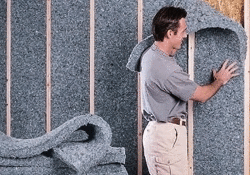KITCHEN INTERIOR MAKEOVER

Of all the rooms in our homes, the kitchen is the most complex. Designing one that works well and lives well is a challenge. This book was written to help you create a kitchen that works with you in the context of your life and the lifestyle of your household. Too many of the kitchens we use daily work against us, making regular tasks tedious and extraordinary tasks like entertaining a chore rather than a pleasure. We all spend a lot of time in the kitchen even if we never cook a gourmet meal. We eat there, we socialize, we work, we organize, and we recharge our engines for another challenging day. Kitchens That Work is a book about the design process. Every time we design and build a kitchen for someone we go through an educational process with our clients, as they learn about everything from hidden heating ducts in the ceilings to making sure that their counter edges are safe for small children. Kitchens are not only the social heart of the house, but they are also often the utilitarian heart of the house, the place where all the life-support systems we depend on converge. Consider that they should be aesthetically pleasing and functional, too, and you have a design challenge that can stump even the most experienced designer. We'll be looking at everything from style to plumbing to dealing with contractors. You can use the book to help you communicate your wishes to a professional designer or contractor, or you can use it to guide you through your own design process. We won't tell you how to hook up a dishwasher or build a cabinet because there are plenty of excellent sources for that information. We will help you decide where that dishwasher goes and what the difference is between face-frame and Euro-style cabinetry so that you can make informed choices. Making those choices is what this book is about. Part 1 of Kitchens That Work focuses on the knowledge you already possess. We'll examine how you use your kitchen, what works and what doesn't, and why. We'll look at money and budgets and ways you can get the most from your dollars. Then we'll examine the existing systems and architecture and help you learn how they can be adapted or changed to improve the basic space. Photos, illustrations, and checklists will get you started learning more about the design process as it affects your needs and interests. Part 2 is about design and style.